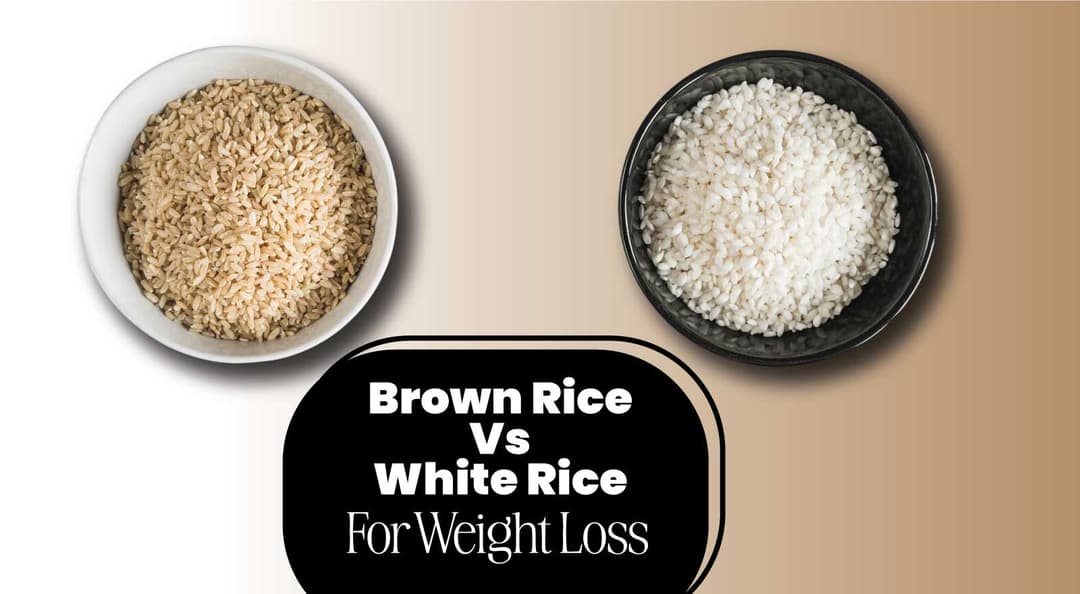The correlation between ethnicity and Body Mass Index (BMI) represents a multifaceted interplay of environmental, socio-cultural, and biological factors. BMI serves as a fundamental metric for assessing body composition and health status, yet its interpretation varies significantly across different ethnic groups. Furthermore, acknowledging the need for tailored approaches in BMI assessment, BMI adjusted for ethnicity accounts for ethnic differences.
Also, the inter-sectionality of BMI by race and gender recognises the importance of considering multiple factors in understanding health outcomes within specific demographic groups. Linked to these themes are the complexities of BMI adjusted for ethnicity and their implications for healthcare interventions and public health policies.
This blog explores the nuances surrounding ethnic differences in BMI, discussing the underlying reasons and implications of these variations. By examining five distinct ethnic groups and elucidating five specific BMI cut-offs, it will explain the complexities of ethnicity's impact on BMI, including its significance in understanding health disparities within diverse populations.
Table Of Contents
- Is BMI Affected By Ethnicity?
- 3 Major Ethnic Differences In BMI
- 5 BMI In Different Ethnic Groups
- 5 Ethnicity-Specific Cut-Offs
- Dietitian’s Recommendation
- The Final Say
- FAQs
- References
Is BMI Affected By Ethnicity?
You can measure your BMI by dividing your weight in kgs by the square of your height in meters. Before discussing ethnic differences, it’s essential to understand BMI itself. While it serves as a useful screening tool for identifying individuals at risk of health issues associated with weight, such as obesity and related comorbidities, particularly in different ethnic populations, it does have limitations.
A research conducted by the Indian Council of Medical Research (ICMR), the India Diabetes (INDIAB) Study, estimated the prevalence of diabetes and prediabetes across various regions and ethnic groups in India. While the primary focus was on diabetes, the study also collected data on BMI and other anthropometric measures, providing insights into ethnic differences in body composition and obesity prevalence.
Along with this study, there have been numerous regional and local studies conducted across India to explore the ethnic differences in BMI and obesity prevalence within specific communities and population groups. These studies often highlight the influence of cultural practices, dietary habits, and socio-economic factors on BMI and health outcomes among different ethnicities within the country.
Also Read: Is Your Body Weight Index Healthy? Learn How to Calculate and Interpret It!
3 Major Ethnic Differences In BMI
Studies have shown that individuals of South Asian, African, and Hispanic descent tend to have higher BMI values compared to individuals of European descent, even when controlling for socioeconomic status and lifestyle habits.
Research consistently demonstrates ethnic differences in BMI across different groups. For instance, some ethnic groups, including Asians, may have lower BMI thresholds for defining obesity due to differences in fat distribution and body composition.
Let’s explore these significant ethnic differences in BMI:
1. Biological Factors
Ethnicity often correlates with genetic differences impacting your metabolic rate, muscle mass, and fat distribution. Genetic predispositions are crucial in determining an individual’s body composition and metabolism, influencing BMI. For example, certain genetic variations are associated with higher rates of obesity and related conditions in specific ethnic populations.
2. Environmental And Socio-Cultural Influences
Dietary patterns, access to cultural norms, physical activity, healthy foods, body image, and socio-economic disparities all influence BMI within ethnic communities. Apart from genetics, environmental and socio-cultural factors also contribute significantly to ethnic differences in BMI. For instance, food environments characterised by limited access to fresh produce and high availability of processed foods result in higher obesity rates in certain ethnic groups.
3. Health Implications
Higher BMI levels are associated with increased risks of health issues, including sudden heart attack, type 2 diabetes, certain cancers, and hypertension. By highlighting the importance of tailored interventions and healthcare strategies, understanding ethnic differences in BMI is crucial for addressing the imbalance in health outcomes; ethnic groups with higher average BMI values may face relatively too small burdens of these diseases.
5 BMI In Different Ethnic Groups

Research on BMI in different ethnic groups reveals significant variations in body composition and obesity prevalence across populations. Let’s explore these key findings from studies conducted worldwide to understand the ethnic differences in BMI between various groups:
1. African American And Black Populations
United States tend to have higher average ethnic differences in BMI compared to other ethnic groups. Higher cases of obesity and related health conditions, like type 2 diabetes plus cardiovascular disease, are observed among African American and Black individuals. Studies have consistently shown that Black and African American populations in this variation are attributed to various factors, including cultural norms, socioeconomic status, genetic predispositions, and environmental factors.
2. Hispanic And Latino Populations
Studies suggest that specific ethnic differences in BMI directly contribute to differences in body composition and metabolism within these populations. Compared to non-Hispanic white populations, Hispanic and Latino populations have higher rates of obesity, as per the research. While Hispanics and Latinos exhibit diverse genetic backgrounds, factors contributing to this disparity include cultural dietary practices, socio-economic inequalities, and limited access to healthy foods.
3. Asian Populations
Compared to Western populations, Asian populations, including individuals of South Asian, Southeast Asian and East Asian descent, often have lower average BMIs. The concept of "Asian BMI cut-offs" has been proposed to account for these differences, recognising that Asians may be at increased risk of obesity-related diseases.
However, this does not necessarily indicate lower health risks, as Asians may have higher levels of visceral fat and metabolic abnormalities at lower BMI thresholds.
4. Native American And Indigenous Populations
Historical factors, including colonisation, displacement, and cultural disruptions, have contributed to challenges in accessing traditional foods and maintaining healthy lifestyles among indigenous populations. Underscoring the significance of culturally sensitive approaches to addressing these health disparities, indigenous communities often experience higher rates of obesity, cardiovascular disease, and type 2 diabetes compared to the general population.
Native American and Indigenous populations in North America face significant inequality in obesity prevalence and related health outcomes.
5. European And Caucasian Populations
Studies generally show lower average BMIs compared to specific ethnic groups, like African Americans and Hispanics, while obesity rates vary within European and Caucasian populations. Individuals of European descent are still at risk of obesity-related health conditions, emphasising the need for comprehensive public health strategies to promote healthy behaviours and prevent chronic diseases.
However, obesity prevalence has been increasing in many Western countries due to shifts in dietary patterns, sedentary lifestyles, and other socio-economic factors despite lower average BMIs.
5 Ethnicity-Specific Cut-Offs
Note the given ethnic differences in BMI cut-offs for better understanding:
Ethnicity | BMI Cut-offs | Considerations |
Asian | Overweight (BMI ≥ 23 kg/m²) Obesity (BMI ≥ 27.5 kg/m²) | The WHO and IOTF recommend lower BMI thresholds for defining overweight and obesity in Asian populations due to higher levels of visceral fat and increased risk of obesity diseases, even at lower BMI levels compared to Caucasians. |
Pacific Islander | Varied BMI cut-offs reflecting unique body composition and health risks | Higher average BMIs and rates of obesity-related diseases in Pacific Islander populations suggest the need for higher BMI cut-offs to define overweight and obesity. |
African American | No widely adopted specific BMI cut-offs; tend to have higher average BMIs | African American populations often have higher BMIs and obesity-related health conditions compared to Caucasians. |
Hispanic/Latino | No commonly used ethnicity-specific BMI cut-offs | Cultural and socio-economic factors may influence obesity rates in Hispanic/Latino populations, requiring healthcare providers to consider these factors when assessing obesity-related health risks. |
Native American | No widely established specific BMI cut-offs; elevated risk of obesity-related diseases | Native American populations face disparities in obesity prevalence and related health outcomes, necessitating individualised approaches to obesity management. |
Dietitian’s Recommendation
As a dietitian, I recognise that ethnic differences significantly affect BMI and overall health. Asian populations may be at higher risk for obesity-related conditions at lower BMIs. By acknowledging and addressing ethnic differences in BMI, dietitians empower individuals to make informed choices that support their health and well-being. Understanding these variations helps tailor dietary advice to individual needs, for instance. Additionally, promoting physical activity and healthy lifestyle behaviours within the context of cultural traditions fosters sustainable weight management. It's crucial to emphasise culturally appropriate, nutrient-dense foods while addressing unique dietary habits within each ethnic group.
Dt. Akshata Gandevikar
The Final Say
This exploration of ethnic differences in BMI highlights the limitations of a one-size-fits-all approach to health assessments. By addressing the root causes of ethnic differences in BMI, you can work towards building healthier and more inclusive communities for all individuals, regardless of their ethnic background.
While a complex mix of genetic, socio-cultural factors and environmental concerns influences ethnic differences in BMI, understanding how ethnicity can influence body composition and health risks is crucial for accurate health evaluations. Recognising these variations is essential for developing effective strategies to promote health equity and reduce gaps in health outcomes.
Remember, BMI is just one piece of the puzzle. Consulting a healthcare professional for a comprehensive evaluation, including body composition analysis and risk factors, remains essential for optimal health management.
FAQs
1. Is BMI different for Indians?
BMI calculations remain the same for Indians as for any other population group. However, due to variations in body composition and genetic factors, interpretations of BMI may differ among individuals of Indian ethnicity.
2. Is BMI different for Asians?
BMI calculations are the same for Asians as for any other ethnic group. However, research suggests that Asians may have different body compositions than other populations, leading to variations in how BMI is interpreted among Asian individuals.
3. Why is Asian BMI different?
Due to differences in body composition and body fat distribution, Asian individuals often have lower average BMIs than Western populations. Genetics, cultural dietary practices, and lifestyle habits influence this variation in BMI.
4. Why is Asian BMI lower?
Asian BMI tends to be lower due to differences in body composition, with Asians typically having higher levels of visceral fat and an increased risk of obesity-related diseases at lower BMI thresholds compared to other ethnic groups.
5. Is there a BMI ethnicity calculator?
While traditional BMI calculators do not account for ethnicity, some specialised BMI calculators consider ethnicity-specific factors. These calculators may provide more accurate assessments of BMI for individuals of different ethnic backgrounds.
6. Is there a BMI calculator with ethnicity?
Some BMI calculators incorporate ethnicity to provide more accurate assessments for individuals from diverse ethnic backgrounds. These calculators may offer insights into how ethnicity influences BMI interpretation and health risks.
7. Is there a South Asian BMI calculator?
Yes, there are BMI calculators specifically designed for South Asian populations. These calculators consider your body composition, genetic predispositions, and health risks prevalent among South Asians, aiming to provide more tailored assessments of BMI for individuals of South Asian descent.
References
- Diabetes Distilled: Ethnicity-specific BMI cut-offs for obesity and type 2 diabetes risk
- Ethnicity-specific BMI cutoffs for obesity based on type 2 diabetes risk in England: a population-based cohort study
- Ethnic-Specific Criteria for Classification of Body Mass Index: A Perspective for Asian Indians and American Diabetes Association Position Statement
- Ethnic Differences in BMI and Disease Risk.
- Ethnic differences in the relationship between body mass index and percentage body fat among Asian children from different backgrounds
- Modern Ethnic BMI Calculator
About ToneOp Fit
ToneOp Fit is a platform dedicated to improving and maintaining good health through a comprehensive range of goal-oriented health plans with up to 3 Coach support. With a range of Weight Management, Medical Condition, Detox Plans, and Face Yoga Plans, the app also provides premium health trackers, recipes and health content. Get customised diet, fitness, naturopathy & yoga plans and transform yourself with ToneOp.








































